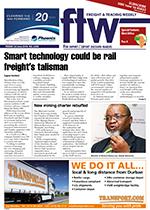Increased insurance premiums could be in the pipeline thanks to the vandalising of a total of 76 trucks and trailers in violent protests in the first five months of 2018.
Each costs an average of R1.5 to R2 million. Transport economist Mike Schüssler told FTW he expected the price of insurance on goods to increase within the “next year or so”. While insurance companies generally factored in the loss of a multimillion rand truck – especially given South Africa’s high crime rate – they did not generally factor in the loss of goods, he added.
“Now, with the loss of the goods during protests – and all signs point to an escalation of these kinds of protests because of the media coverage – it is likely the cost of goods insurance will increase exponentially,” said Schüssler.
The state-owned South African Special Risks Insurance Association (Sasria) – which specifically covers social unrest and riots in the country – also confirmed a rising trend of violent protest action involving trucks, pointing out that the number of special-risk claims in the freight transport sector in SA had doubled over the past five years.
The millions paid out have more than quadrupled in the same time period, according to Sasria. “We are always on high alert when we hear about strikes or protest action as these events often trigger crime and losses to transport companies,” said Letlhogonolo Tau, head of customer relations management at Sasria. Sasria covers all goods in transit – including food, fuel, household goods and everything in between – for trucking companies of all sizes.
Insurance companies are however not convinced that this will lead to rising insurance costs. Mike Brews of Horizon Marine Insurance told FTW that while there had been a rise in claims it was not a “huge amount” in terms cargo business. “Remember, this is just 76 trucks out of the thousands that are on our roads every day.
If we compare those losses to those of hijackings the comparative value and volume is relatively small,” he pointed out. Wayne Rautenbach, general manager at insurance company Hollard’s Commercial Vehicles division, agreed. “While we have had four claims this year for trucks that were burnt out as a direct result of violent protest action, this does not yet represent a negative trend,” he said.
According to Rautenbach, most retailers also only pay for the goods once they have been delivered. “This means it falls to the transporter to insure the goods while they are in transit.” He said that low value goods such as FMCG would typically have an excess structure in place (typically around R5 000) which meant that transporters would need to take that loss themselves, which he said they typically did.
Both Brews and Rautenbach recommended that shippers (retailers) and transporters ensured they had Sasria cover and that they had adequate insurance cover for both vehicles and cargo.
INSERT
If we compare those losses to those of hijackings, the comparative value and volume is relatively small. – Mike Brews

